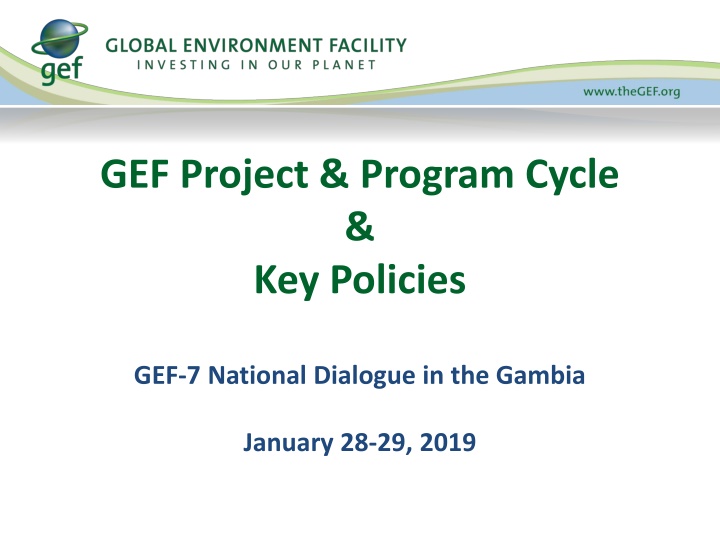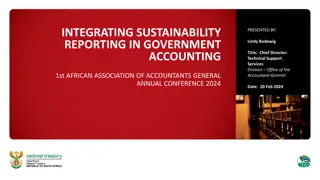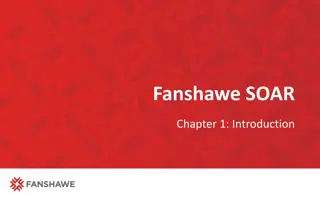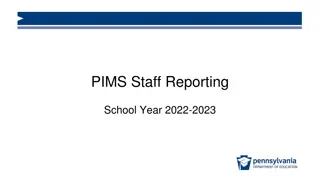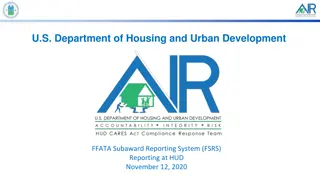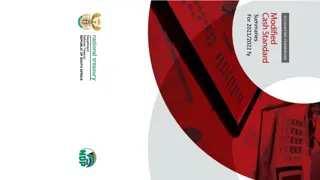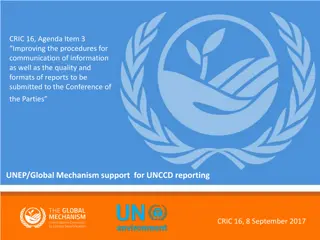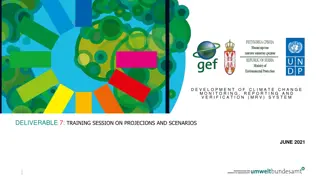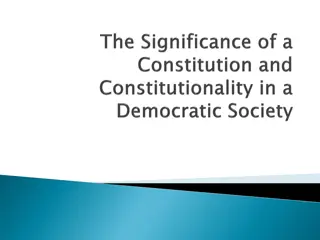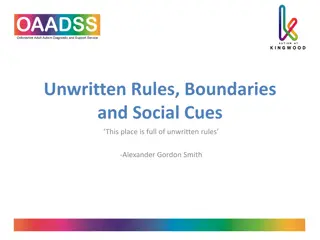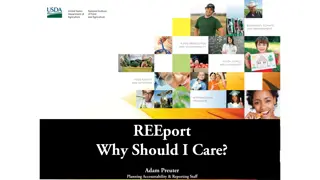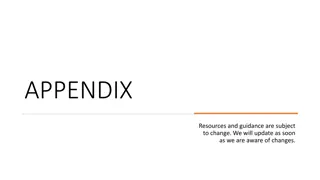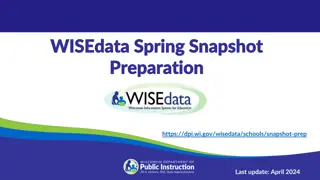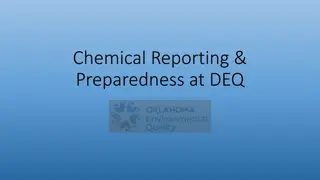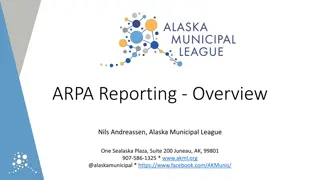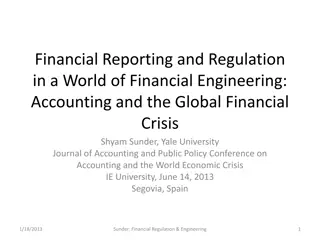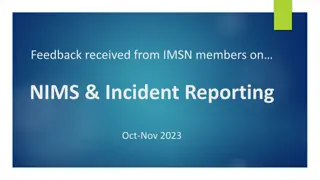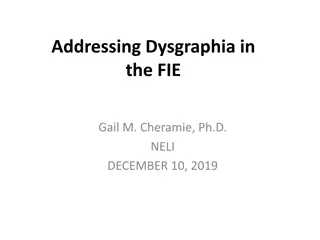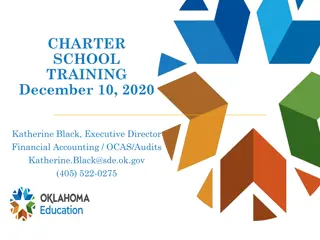Roles of Written and Unwritten Requirements in Financial Reporting
This content discusses the importance of written and unwritten requirements in financial reporting, the impact of specific vs. structural problems, challenges in local news reporting, and the efficacy of solutions. It also explores the role of institutions in deciding accounting standards and the evolution of regulatory approaches.
Download Presentation

Please find below an Image/Link to download the presentation.
The content on the website is provided AS IS for your information and personal use only. It may not be sold, licensed, or shared on other websites without obtaining consent from the author.If you encounter any issues during the download, it is possible that the publisher has removed the file from their server.
You are allowed to download the files provided on this website for personal or commercial use, subject to the condition that they are used lawfully. All files are the property of their respective owners.
The content on the website is provided AS IS for your information and personal use only. It may not be sold, licensed, or shared on other websites without obtaining consent from the author.
E N D
Presentation Transcript
GEF Project & Program Cycle & Key Policies GEF-7 National Dialogue in the Gambia January 28-29, 2019
GEF Partnership Guidance Operations Action GEF AGENCIES ADB AfDB BOAD CAF CI DBSA EBRD FECO FUNBIO IADB IFAD IUCN FAO UNDP UNEP UNIDO WB WWF-US Independent Evaluation Office GEF Trustee GEF ASSEMBLY 183 Countries OFPs & PFPs Convention FPs Gov t agencies NGOs / CSOs Private Sector GEF GEF COUNCIL 32 Constituencies Secretariat CONVENTIONS CBD UNFCCC UNCCD Stockholm(POPs) Minamata STAP
GEF Project Modalities Full-Sized Project (FSP): financing over US$2M Medium-Sized Project (MSP): financing of US$2 or less Program: a longer term and strategic arrangement of individual yet interlinked projects that aim at achieving large-scale impacts on the global environment Enabling Activity (EA): preparation of a plan, strategy or report to fulfill commitments under a Convention
4 Full-Sized Project Cycle Step 2 STAP advisory Council approval of PIF Step 1 GEFSEC review for PIF clearance Agency: project concept development & PIF submission Trustee sets aside GEF financing (commits 40% 20% Agency fee) In-country project concept identification Step 3 GEFSEC review for CEO endorsement Agency: project preparation & CEO endorsement request Step 4 Terminal evaluation /completion report Trustee commits GEF financing & 60% of Agency fee Agency: internal project approval & Implementation begins Agency:1stdisbursement to country. Trustee commits 50% Agency fee Agency: project closing & evaluation Agency: Mid-term evaluation. Trustee commits 30% Agency fee
5 Medium-Sized Project (2 step approval) Trustee sets aside GEF financing Step 1 GEF CEO Approval of PIF (Concept) Agency: project appraisal Agency: PIF (concept) submission In-country project concept consultation & development Agency: fully developed project submission Step 2 GEF CEO Approval Of Fully developed project Step 4 Financial Closure Within 12 mon from TE Trustee commits GEF financing & 100% Agency fee Step 3 Terminal Evaluation Agency: internal project approval & implementation begins Agency: 1stdisbursement to country &Trustee commits 100% Agency fee Agency: PIR & Mid- term evaluation
6 Medium-Sized Project (1 step) Trustee commits GEF financing Step 1 GEF CEO Approval Of Fully developed project Agency: Fully developed project submission In-country project concept consultation & development Agency: project appraisal Step 3 Financial Closure Within 12 mon from TE Agency: Internal project approval & implementation begins Step 2 Agency: 1stdisbursement to country &Trustee commits 100% Agency fee Terminal Evaluation Agency: PIR & Mid-term evaluation
7 Program Trustee sets aside GEF financing; commits 20% Agency fee STAP advisory Step 2 Council Approval of Program Concept Agency: project appraisal Step 1 GEFSEC Clearance Of Program Concept Agency: fully developed project Child project submission Agency: PFD (Program concept) submission In-country project concept consultation & development Step 3 GEF CEO Approval Of Child Project Step 5 Financial Closure Within 12 mon from TE Trustee commits GEF financing Agency: project approval & implementation begins Step 4 Agency: 1stdisbursement to country Trustee commits 50% (FSP) / 80% (MSP) Agency fee Terminal Evaluation Agency: PIR Agency: Mid-term evaluation Trustee commits 30% Agency fee (FSP)
GEF-7 policies focus The Policy Recommendations for GEF-7 are aimed at enhancing the effectiveness and efficiency in the following areas: resource allocation optimizing the use of GEF resources in different countries Results Partnership Governance private sector engagement operational efficiency and transparency (fees & cancellation) improved management of data and information gender equality knowledge management, and responsible investment strategy Practical Steps to Improve Coordination and Workflow in the GEF Partnership
Key GEF-7 Policies Project identification Concept submission (PIF/PFD) Fully developed project (CEO approval/endorsement) Implementation (PIF, MTR, TR) Gender Equality Policy 53rdCouncil Meeting, https://www.thegef.org/council-meeting-documents/policy-gender-equality Annual reporting on, including through PIRs, mid-term reviews, and terminal evaluations on progress and results Meaningful consultations w/ stakeholders on the proposed project/progra m, early screening Indicative info on gender considerations & any measures to address these, including process to collect sex- disaggregated data & gender info (a) Gender analysis or equivalent socio- economic assessment that identifies and describes any gender differences, gender differentiated impacts & risks, and opportunities to address gender gaps and promote the empowerment of women, as relevant to the proposed activity (b)Any corresponding gender-responsive measures to address differences, identified impacts & risks, and opportunities through a gender action plan or equivalent (c) If gender-responsive measures have been identified, results framework or logical framework with actions, gender-sensitive indicators & sex-disaggregated targets
Project identification Concept submission (PIF/PFD) Fully developed project (CEO approval/endorsement) Implementation (PIF, MTR, TR) Stakeholder Engagement Policy https://www.thegef.org/council-meeting-documents/policy-stakeholder-engagement (53rd CM) Indicative info on stakeholder engagement, including any consultations conducted during project development, as well as information on how Stakeholders will be engaged in the project/ program, and means of engagement requirements, and timing throughout the project cycle Stakeholder engagement plans or equivalent, with stakeholders who have been and will be engaged, means of engagement, dissemination of information, roles and responsibilities, resource Annual reporting on, including through PIRs, mid-term reviews, and terminal evaluations on progress, challenges and outcomes Meaningful consultations w/ stakeholders on the proposed project/program, early screening Environment & Social Safeguard Policy (in draft) https://www.thegef.org/documents/environmental-and-social-safeguard-standards Indicative info on any environmental and social risks and potential impacts associated with the proposed project/ program; and any measures to address these environmental and social management plans or the equivalent Additional information on relevant risks and impacts, and measures to address these, including any assessments carried out, and any Reporting at mid-term and completion on the implementation of relevant environmental and social management measures Meaningful consultations w/ stakeholders on the proposed project/program, early screening Co-financing Policy http://www.thegef.org/council-meeting-documents/updated-co-financing-policy (54th CM) Indicative information on the expected amounts, sources and types of co-financing, and the sub-set of such co-financing that meets the definition of investment mobilized supporting evidence Confirmed information on the expected amounts, sources and types of co-financing and investment mobilized , with Reporting at mid-term and completion on actual amounts, sources and types of co- financing and investment mobilized
Co-Financing Policy Co-Financing: financing that is additional to GEF financing (excludes recurrent expenditures) Overall GEF portfolio: at least 7:1 Upper-Middle Income Countries and High-Income Countries - that are not Small Island Developing States or Least Developed Countries - at least 5:1
Co-Financing in the Gambia GEF Grant w/o agency fee ($million) 0.4 1.7 0.3 8.5 29.4 20.6 61.0 Number of projects 3 4 2 5 9 5 28 Co-Finance ($ million) 0 0.9 0.0 22.8 111.4 44.5 179.7 Ratio of Co-Financing 0 0.5 0.1 2.7 3.8 2.2 2.9 GEF - 1 GEF - 2 GEF - 3 GEF - 4 GEF - 5 GEF - 6 Total 2
Changes to STAR As of July 1, 2018 Increasing flexibility full flexibility retained for countries with allocations US$7m; for others (The Gambia), marginal adjustments of up to 15% of total allocation Adjustments to the minimum allocation floors in each focal area ($m): Non-LDCs LDCs (The Gambia) GEF-6 GEF-7 GEF-6 GEF-7 Biodiversity 1.5 2 2 3 Climate Change 2 1 3 1.5 Land Degradation Aggregate Floor 0.5 4 1 4 1 6 1.5 6
GEF-7 STAR Allocation for The Gambia ($m) Climate Change Biodiversity Land Degradation Total Fully Flexible Marginal Adjustment* 1.50 3.00 5.33 9.83 no 2.00 Other windows IW, C&W, NGI Impact Programs
GEF Small Grants Programme (SGP) Implemented by the UNDP since 1992 Only window for CSOs/CBOs Decentralized structure Decision making body: NSC- participating countries National Steering Committees (NSC) supported by Technical Advisory Groups (TAGs) Core Funding: $128 M for GEF-7 Countries < $15 M in STAR: Up to 10% of STAR
SGP The GEF Small Grants Programme Size of SGP Grants Planning Grants-Maximum $5K Regular Grants-Maximum $50K Strategic Grants-Maximum $150K Global/Regional Grants: $250k to 500k Innovation Programme
GEF-7 Country Support Program (CSP) Objective: Strengthen capacity of GEF recipient country Focal Points, Convention Focal Points, civil society and GEF Agencies to understand the GEF policies and programming strategy; assist recipient countries with use of GEF resources effectively and efficiently CSP Tools: National Dialogues (National Level) Workshops (Multilateral level) Constituency Meetings Introduction Seminars Pre-Council Meetings for Recipient Country Council Members & Alternates
